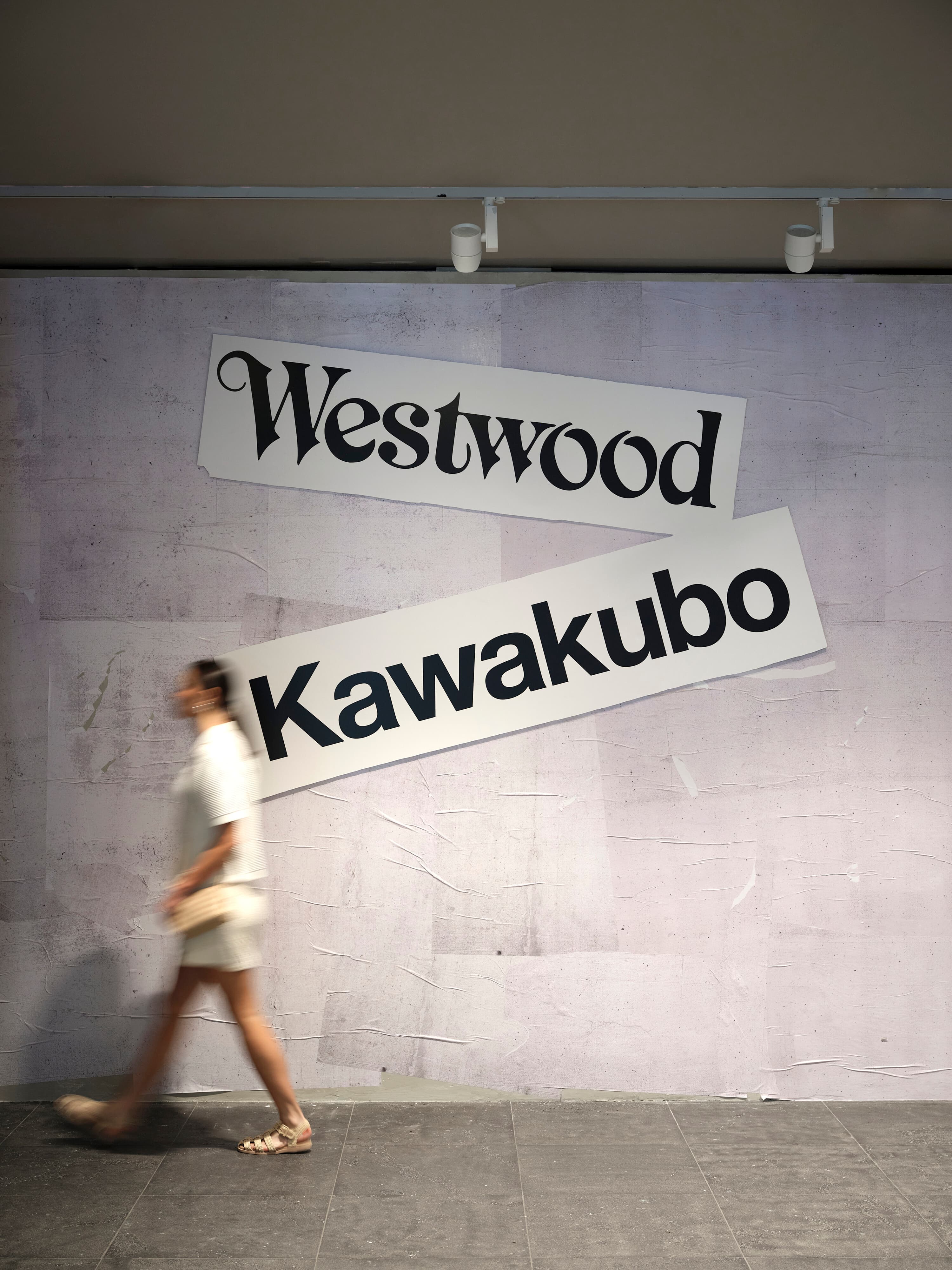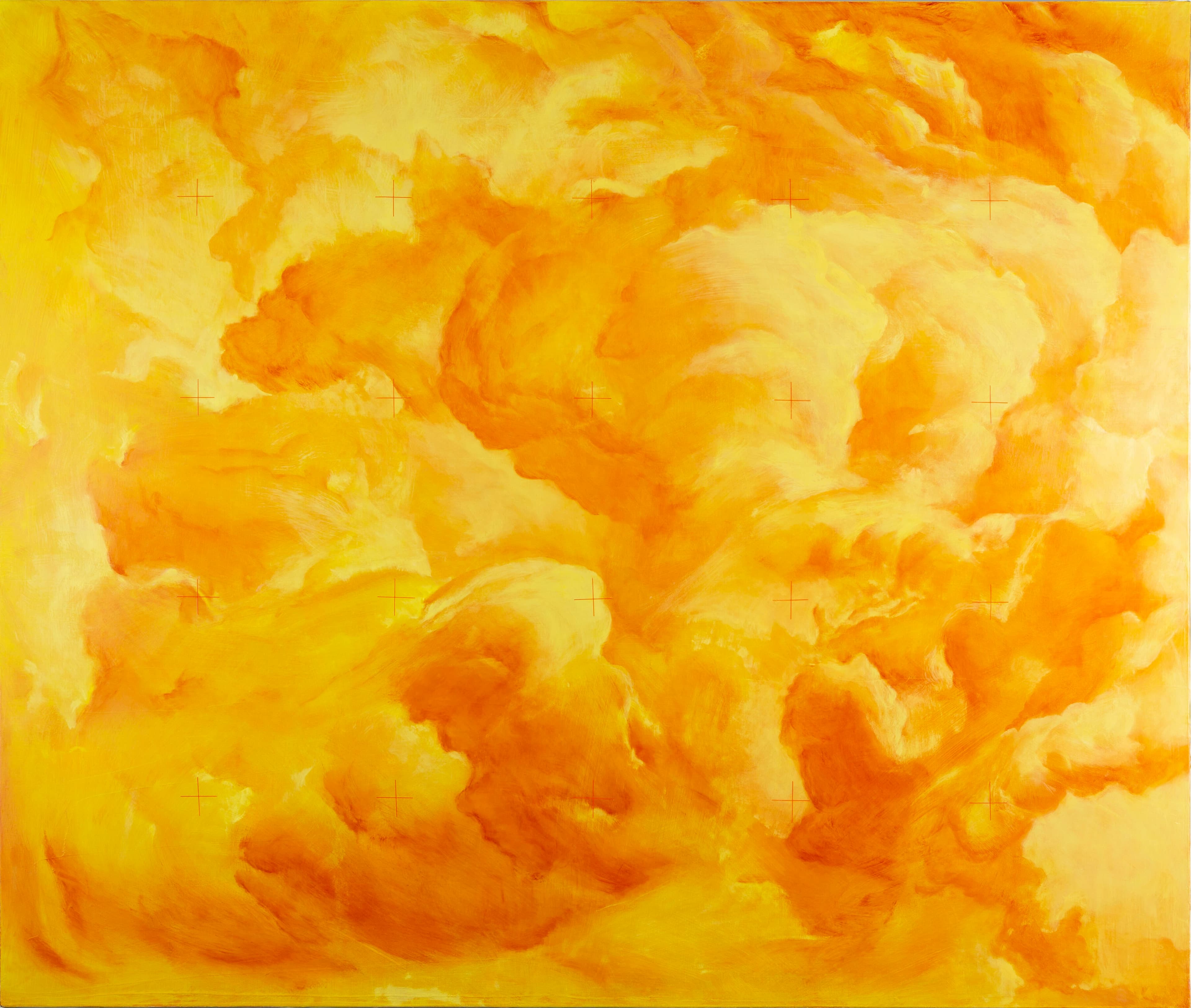Queer: Stories From the NGV Collection
Jeremy Eaton
David McDiarmid’s 1978 artwork Gay Dollar, featured in the first gallery of Queer: Stories from the NGV Collection, contains an unassuming homespun Dymo label that slyly states, “what gays do in the privacy of their own homes is their own business … big business”. This cutting line, rich with ironic humour, is collaged alongside an advertisement for a company that specialises in accessing the affluent, yet clandestine queer market. You could easily miss the detail. No reference is made to McDiarmid’s commentary in the accompanying didactic, and amidst the National Gallery of Victoria’s dense collection hang such moments are easy to pass by. The advertisement in Gay Dollar is a haunting early precedent to the familiar rhetoric often deployed to appease conservatives, that is, speaking to the market value of gay people to make their presence acceptable. (I think here of commentary during Australia’s recent plebiscite for same-sex marriage.) And, despite McDiarmid’s activism and art making, which brought LGBT issues to the fore, Gay Dollar expresses a striking ambivalence, even critical distaste, towards recognition and all it promises. Also incorporating dollar bills printed with upside-down pink triangles of the kind that identified gay men in Nazi concentration camps (lesbians were identified by an inverted black triangle), Gay Dollar succinctly highlights that queer visibility is a double-edged sword that can easily be weaponised by both the market and the state.

It is often the conservatives who express disdain at the “profane” presence of queer markers applied to civic structures, as with the recent backlash against the rainbow being projected on Victoria’s Shrine of Remembrance. But it was members from the LGBTQIA+ community who expressed immediate concern when, back in October 2020, the NGV announced Queer. At the time, the announcement seemed to come out of nowhere, with the institution authoritatively claiming the term and making presumptive statements about how it would present the “most comprehensive” and “unprecedented” queer exhibition ever seen in Australia. The art community’s misgivings were warranted. The NGV has a track record of silencing or closeting LGBTQIA+ artists, corporate alignments (their recent use of Wilson Security for instance), and a perceived neglect in acquiring work by local contemporary LGBTQIA+ artists who have been doing this work consistently for decades. This historical negligence is acknowledged in Queer, including nods to the limitations of their collection and references to the homophobia of prior director J.S. McDonald, who actively worked against the “pansies”, “dandies” and “degenerates” of modernity. But the NGV’s erasure of queer people is hardly something of the distant past, especially when considering that as recently as 2019 the NGV was accused of closeting the gay politics of Keith Haring in the Keith Haring | Jean-Michel Basquiat: Crossing Lines.
The curators of Queer, Angela Hesson, Meg Slater, Pip Wallis, Myles Russell Cook and Ted Gott, were up against a lot and have gone to great lengths to address and rectify certain aspects of the institution. This included community consultation, careful attention to language, not adopting the presumption “heterosexual until proven otherwise”, revising the NGV’s three-year collection strategy and acknowledging misgivings about its own history.

The NGV maintains there were no new acquisitions for the exhibition, but a quick survey indicates there are at least thirty-two works in the show that were acquired across 2020 and 2021, likely to fill gaps in Indigenous representation, non-Western histories and trans representation (all of which are still vastly underrepresented here). Despite the NGV introducing protocols to mitigate against potential backlash or criticism, providing approximately four-hundred offerings with just as many didactics across a whole floor of the gallery, the exhibition does make you ask: what is queer here, how are these stories told, and to what end?
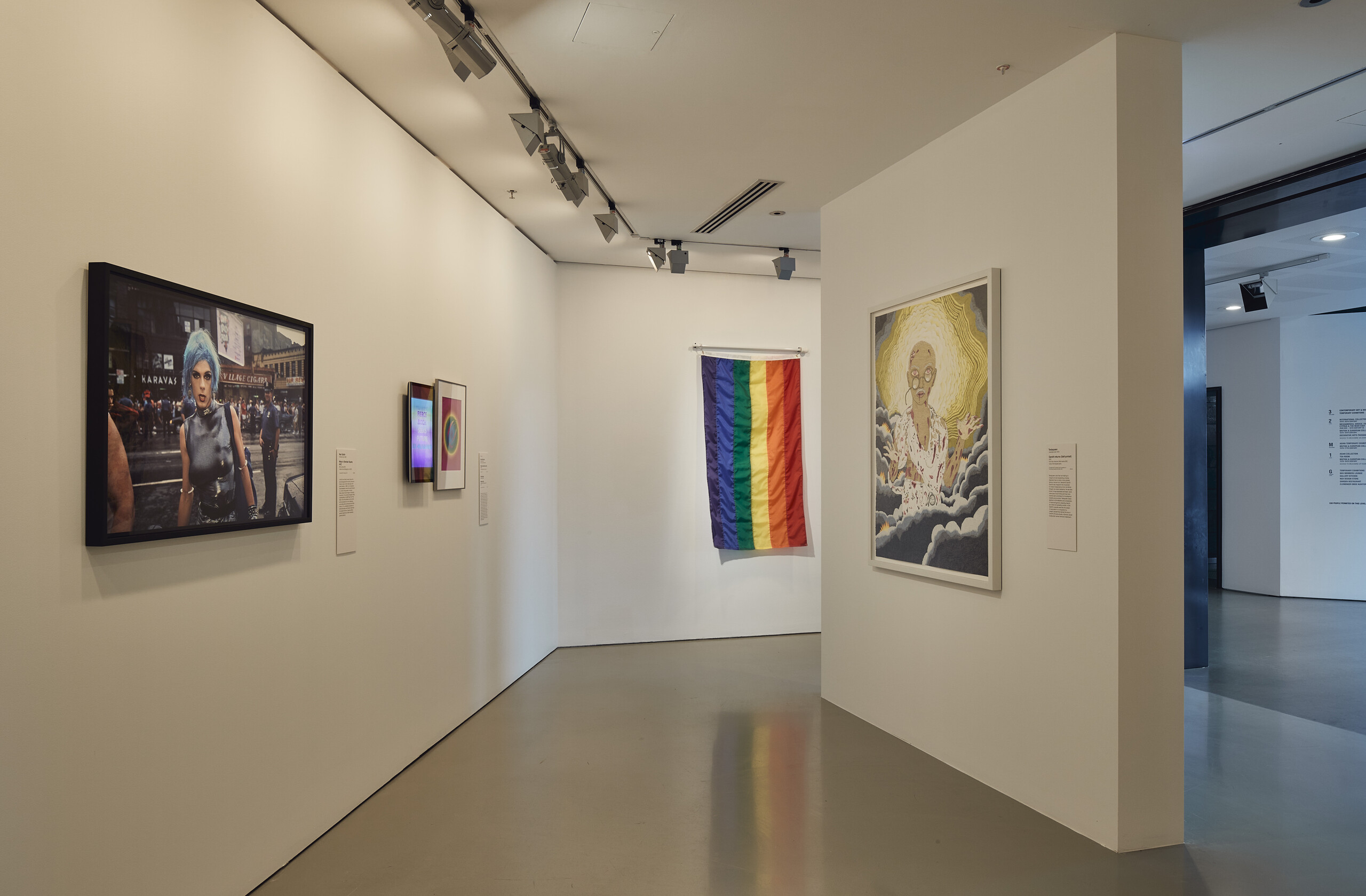
The first gallery you encounter houses powerful works that historically chart the contentious meeting point between LGBT artists and the state. The casual homophobic glance of a police officer bemusedly looking at drag performer Misty in Nan Goldin’s photograph Misty in Sheridan Square (1991), Ponch Hawkes’s joyful documentation of lesbian radicalism during the gay liberation of the early 1970s and David Wojnarowicz’s necessarily angry and harrowing work Untitled (ACT UP) (1990) captures the public homophobia and pharmaceutical profiteering that reduced people dying from AIDS to datasets and glib, political one-liners.
The Communards song Don’t Leave Me this Way plays overhead, evoking curator Ted Gott’s exhibition of the same title (Don’t Leave Me This Way: Art in the Age of AIDS) shown at National Gallery of Australia in 1994. Gott’s seminal exhibition charted the impact of the AIDS crisis on the art community. Heard alongside the works of the period, Don’t Leave Me this Way provided one of the most effective and affective experiences of the show. The track has evocative, melancholic associations for those new to the subject, a mnemonic beat for those who danced up a sweat to it when it was released, and a powerful point of recollection for those who catch the reference to Gott’s exhibition. The historical works continue to carry urgency and power. In contrast, works by Paul Yore and Texta Queen in the same gallery, despite (or possibly because of) their contemporaneity, lack the same urgency, opting instead for a humorous and coded politics that feels decidedly off-key.
In the adjacent hallway, Drew Pettifer and Andy Warhol’s portraits are strays. Without the broader visual context of Pettifer’s project or works to complement Warhol’s self-portrait, the portraits appear like anomalous figures hanging out in the corridor. There is a missed opportunity to abridge the limitations of the collection—namely, to adequately address the “queerness” of Warhol’s oeuvre. For instance, Warhol’s early homoerotic drawings of nude men and shell-clad penises have clear affinities with the linework of Jean Cocteau’s lithographs shown in the next gallery. The “one didactic” per work presentation of the show hindered thematic bleeding and intertextual relations between works, and the lineages of visual styles and motifs, aside from the classics (Saint Sebastian, Amazons, etc.) are rarely elucidated.

The following galleries deploy groups of works to varying effects. Portraits of Christopher Wood, Lytton Strachey, Edith and Osbert Sitwell, Vita Sackville-West and Virginia Woolf are all exhibited with stories of sexuality pervading literati circles. Some recitations are particularly spurious, and the biographical emphasis does make you wonder if the images were even necessary. The seemingly random outing of disparate historical figures could have been an opportunity to unpack the impact of class privilege afforded by certain lifestyles, from bohemian society to superannuated artists living off old money estates, comparatively insulated from homophobia and transphobia by their wealth. This extends to artists exhibited elsewhere in the show, such as in Joy Hester and Sidney Nolan’s association with the alternative living Heide Circle. A curatorial method articulated in Maura Reilley’s catalogue essay, ‘Prising Open the Museum’s Closets’ infers outing as a strategy of the exhibition that when put into action at best reads as art-historical gossip (which we love) and at worst reads like a taxonomic list of artists’ private business that, as Juan Davila highlights in his didactic in the adjacent room, “reductively frames” a range of people and their work. It is akin to creating a ledger of who is, or is possibly, “queer” in the NGV collection.
There is also a conundrum of the closet when outing historical figures, where failing to acknowledge histories risks perpetuating a record of silence around LGBT experience but outing risks essentialising and erasing complexity and context, and so undercutting the diverse life experiences that have contributed to the development of an artist’s work.
A selection of works framed under sensuality and style does much to explore the complexity of visual languages developed by artists who retreated from bourgeoning urbanism and industrialisation of the early twentieth century into ruralism and mythology. There we get an amorphous sense of what could be perceived as a queer sensibility and sensuality through aestheticism, symbolism and surrealism, a kind of early twentieth century futurity expressed in languid nouveau hair and gauzy imagery. While the didactics continue to focus on the backstory of the artists, the collation of works asserts an aesthetic presence of queerness in subject, brushstroke and line, which expand beyond the biographical fact of sexuality. I was particularly drawn to paintings by Jane R. Price, Ina Gregory and May Vale. Together, the paintings chart an aesthetic rooted in lesbian ruralism, where quietly composed depictions of garden idylls, replete with diffuse light and blossoming wildflowers capture the artist’s dream-like retreat. The grouping recalls Tasmanian artist Robyn McKinnon’s paintings of her floral garden in Launceston, and it feels like the beginnings of another, more specifically targeted queer exhibition ripe for future development. Here, there is also a wonderful moment after the series of outings of artists endured, where I’m reminded that refusal and retreat are an aesthetic language and necessary parts of queer history. This is exemplified in a small, alluring and liquidous work In the land of dreams (1903)by Charles Conder that drifts off into an opaque, phantasmatic space of bathers rendered on silk.


There are missteps. The didactic accompanying James Gleeson’s work Pausanias. Olympia in Elis II.XI.7 (1976) highlights that Gleeson was “inspired by classically nude men”. But much of his imagery is directly drawn from erotica by Bruce of Los Angeles and men’s magazines of the time. In this work, the nude figure in the foreground is his partner, Frank O’Keefe. It makes me realise that gay marginalia, political ephemera, zines, erotica and pornography are the necessary tissue of a late twentieth-century gay vocabulary (touchstones for Mapplethorpe, Gleeson, Tillmans, Warhol, etc.), and conspicuously absent throughout the exhibition.
Stories of sex proliferate and bodies are also aplenty at Queer. But the visceral, abject and dissent-laden quality of artists who have used the abject body and explicit sex to challenge hetero-normativity are nowhere in sight. It highlights a limit that the NGV appears unwilling to cross to make these things visible to a broader public (revealing a calculated estimation of tolerance, perhaps?). This has as much to do with the collection and the hang rather than the choice of works for the show. A gallery devoted to queer love and desire features more bodily focussed expressions of sexuality, including NGV classics The Victory of Faith (1890–91) of two women suggestively napping in a stable post-coital and a great painting by Duncan Grant of a group of romping nude bathers all decorously hung with Chopin’s Piano Concerto No. 1 in E minor playing overhead; it is tasteful yet pretty unsexy. Even the didactic on Francis Bacon who was often candid, if not outright aggressively assertive, of his sexuality (for example, recounting sleeping with his dad’s friend at a young age, his sexual desire for his father, and self-professed seduction of George Dyer while he broke into his apartment) features only a fairly tame “story” told about him getting caught wearing his mother’s knickers.
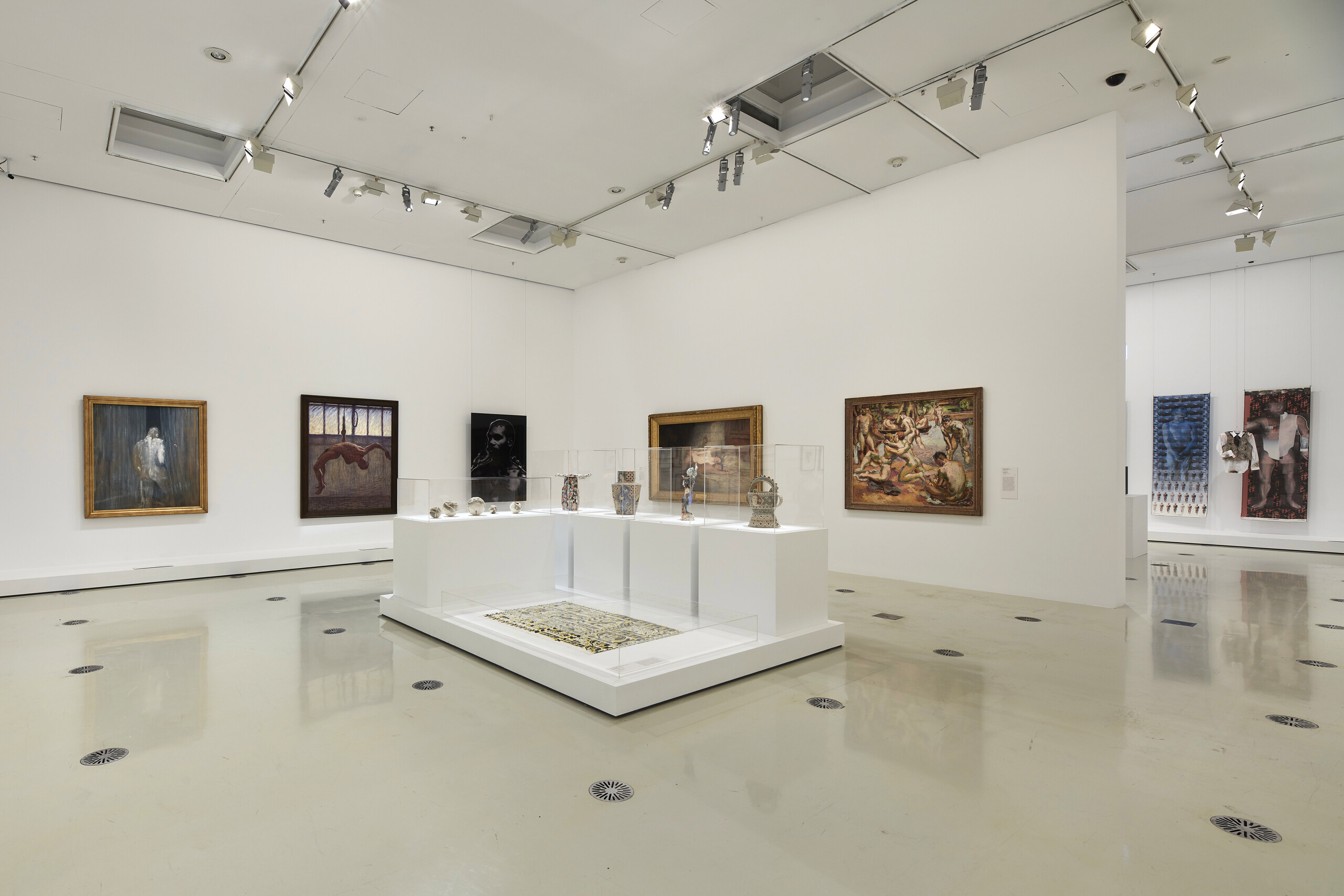
In a section focused on cruising and beats we get a glimpse at this fave gay pastime with Hoda Afshar’s staged works from the Behold Series (2015) and a welcome inclusion of Jeffrey Smart’s painting Winter carnival, Viareggio (1989), recasting one of Smart’s lone, preppily-dressed men as a queer waiting for trade by the seaside. But there is something about the salon-style hang, in a brightly lit, high-ceilinged space, that historicises the work rather than captures the discrete, intimate and at times nerve-wracking sensations that these fleeting sexual encounters can induce. Tracey Moffatt’s Heaven (1998) is one of the few works in the exhibition that really has a libidinal kick. A forever horny work that plays with voyeurism and Australiana to capture the side-eyed glances one might make at surfers routinely getting dressed in various beach parking lots.
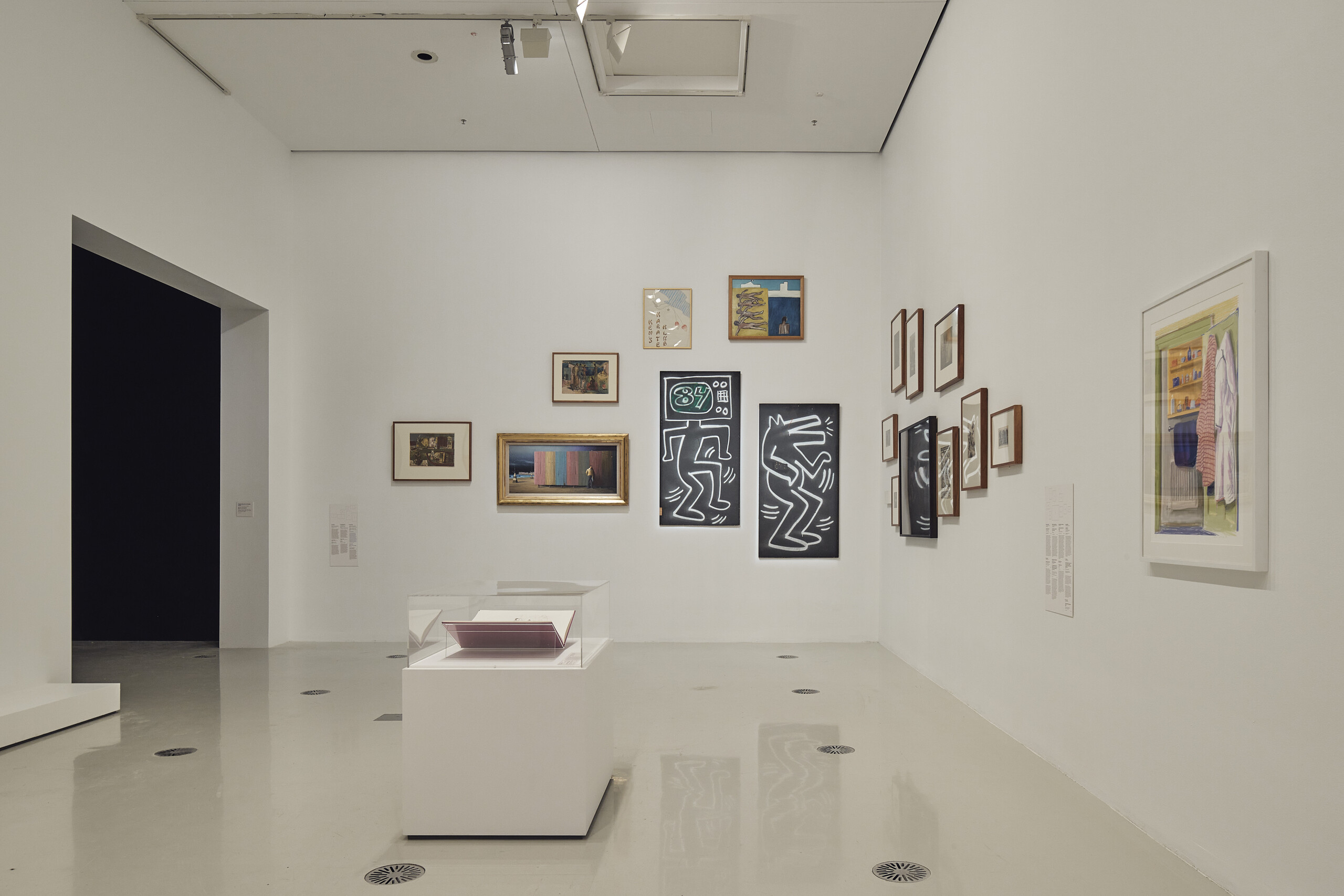
Much can be done by the NGV to acquire work that captures the bodily, libidinal and social realities of sexuality that queers deploy to challenge normative assumptions. My mind immediately goes to Annie Sprinkle’s sex-positive works, the early celebratory, lesbian desert paintings of Jo Darbyshire (whose important museological intervention The Gay Museum (2003) is quoted at length in the catalogue, yet none of her works were acquired for the show…), Ron Athey’s bloodletting works, Fiona MacDonald’s queer pornographic/landscape works from Glade (ACCA 1994) or the bodily work of Cassils, which tackles the complicated politics of trans visibility. Not to mention works in the NGV’s own collection not shown here, such as John Meade’s eroticised domestic tableaux or any number of Scott Redford’s works, of which NGV holds 174.
There is an enormous amount of material for the viewer to move through—sexual histories of gentry and aristocracy, design (Peter Tully still titillates), wonderful theatre costume meanderings, gay pop-icons (where were the lesbian icons?), perennial classics such as Leigh Bowery, harrowing stories about blackmail and corporal punishment and a glance at queer families. Sustained engagement and repeat visits do reward the careful eye, as highly emotional works such as Gary Lee’s overdrawing of an 1879 anthropological photograph of Larrakia man Billiamook Gapal— surprisingly couched amongst queens—shows how homage and identification across time with historical figures can at once be reverent, intimate and yet tinged with desire. Similarly, Tourmaline’s work Atlantic is a Sea of Bones (2017), though relegated to a corner with unfortunately quiet audio, is definitely worth watching. These works by Indigenous, trans and POC artists (still too far and few between) provide pathways to break-up the predominantly white gay and lesbian histories drawn from Australia, Europe and America, that pervade in Queer. The few inclusions of Japanese Kabuki and depictions and histories of Indian gender fluid deity Ardhanarishvara and the Chinese Buddhist figure Guanyin are some of the few but very welcome pre-modern nods to other cultural expressions of queerness.

It became routine on my numerous visits to Queer to finish by watching Pauline Boudry and Renate Lorenz’s work Moving backwards (2019), which takes up an inordinate amount of exhibition floorspace. Not only is it great to have a place to sit but it is also one of the few works that physically enters your body, the bass underfoot rattling through you as a series of intergenerational dancers move together in an abstracted nightclub. Compared to some of the historicising of works in the previous rooms, fixing them under the stories iterated through didactics, this work is actually fun, sexy, a bit lo-fi and evocative of what feels like to be in a queer dance space. The sophisticated movements of the installation’s parts and the confusing backwards-forwards momentum of the performers rails against fixity.
Queer: Stories from the NGV Collection is an exercise in visibility par excellence, and it makes bold moves—on the tail of a rather negligent history to bring many narratives to the fore. The show reminds me that while visibility matters, it can, as McDiarmid highlights, make queer behaviours that have previously flown under the radar vulnerable to policing, corporatisation and bureaucratic intervention. The exhibition also highlights that when queerness is in the public spotlight of a public museum such as NGV it is beholden to normative strictures that can sanitise its effects. Queer succeeds where it manages to expand beyond the recitation of non-normative sexualities or gender diverse figures to explore meeting points fundamental to queer experience, be it between members of a community, bodies during sex, artist-activists and the state, artists with figures and aesthetics of the past. These meeting points, which are variously inflected by joy, pleasure, love, shame, anger, recognition, grief and disappointment, are evanescent in ways that cannot be made legible in a 250-word didactic. The NGV has now drawn many stories out of its closets and done a stocktake of the art that has laid dormant. I hope that Queer is only a preface to the many social histories, figures and artistic styles evoked that warrant much further engagement, elaboration and complication.
Jeremy Eaton is an artist living and working in Narrm.
